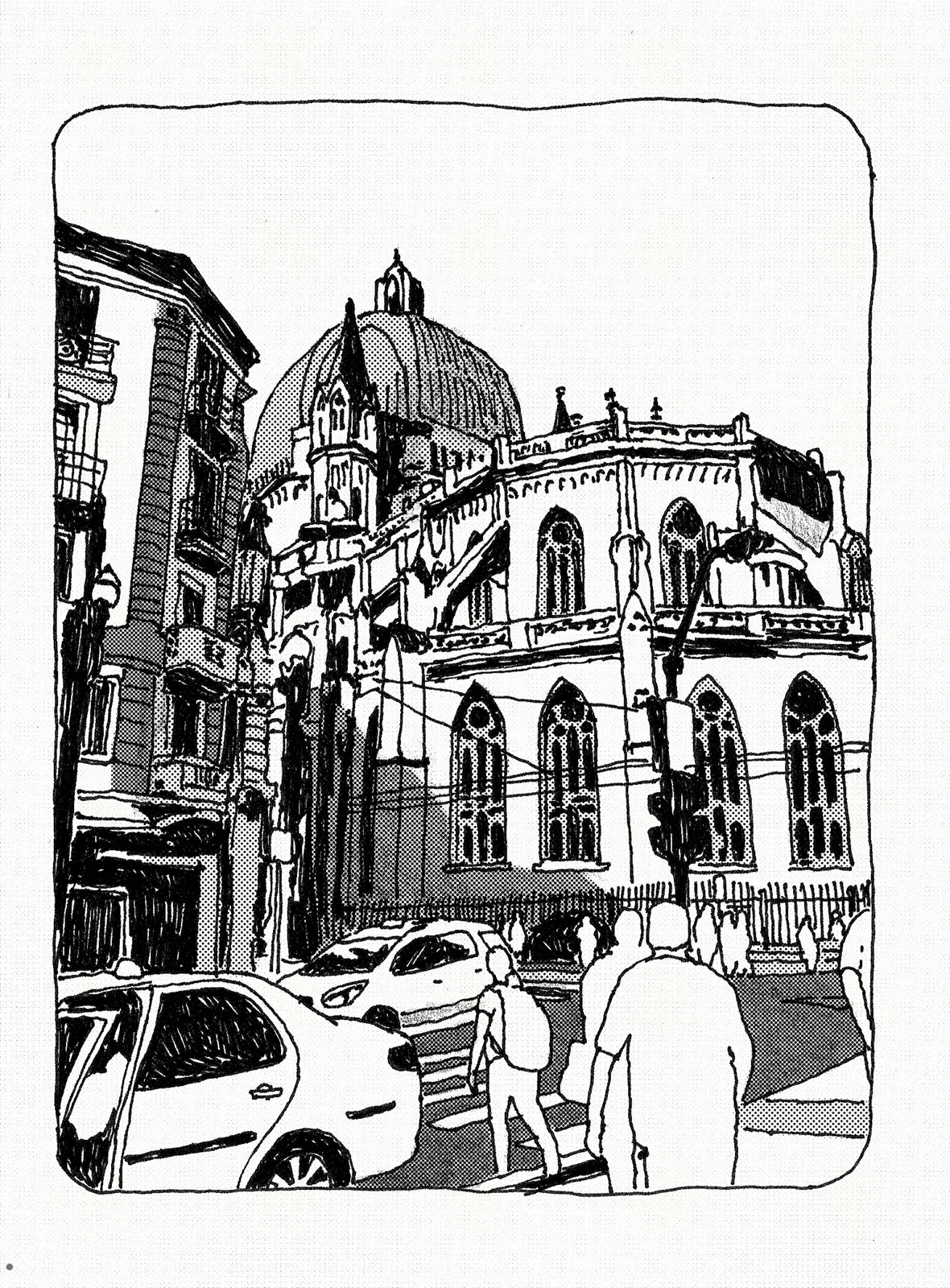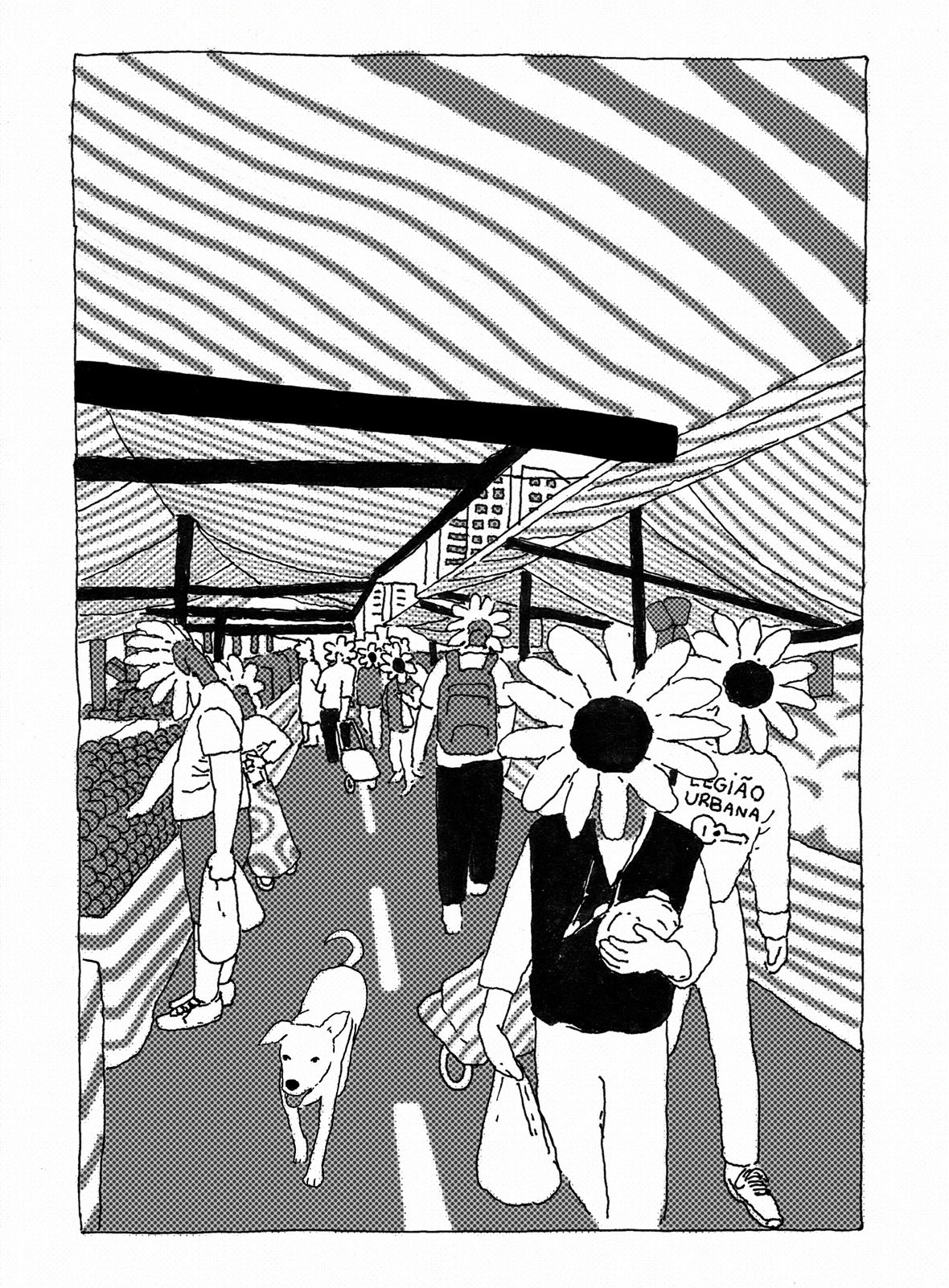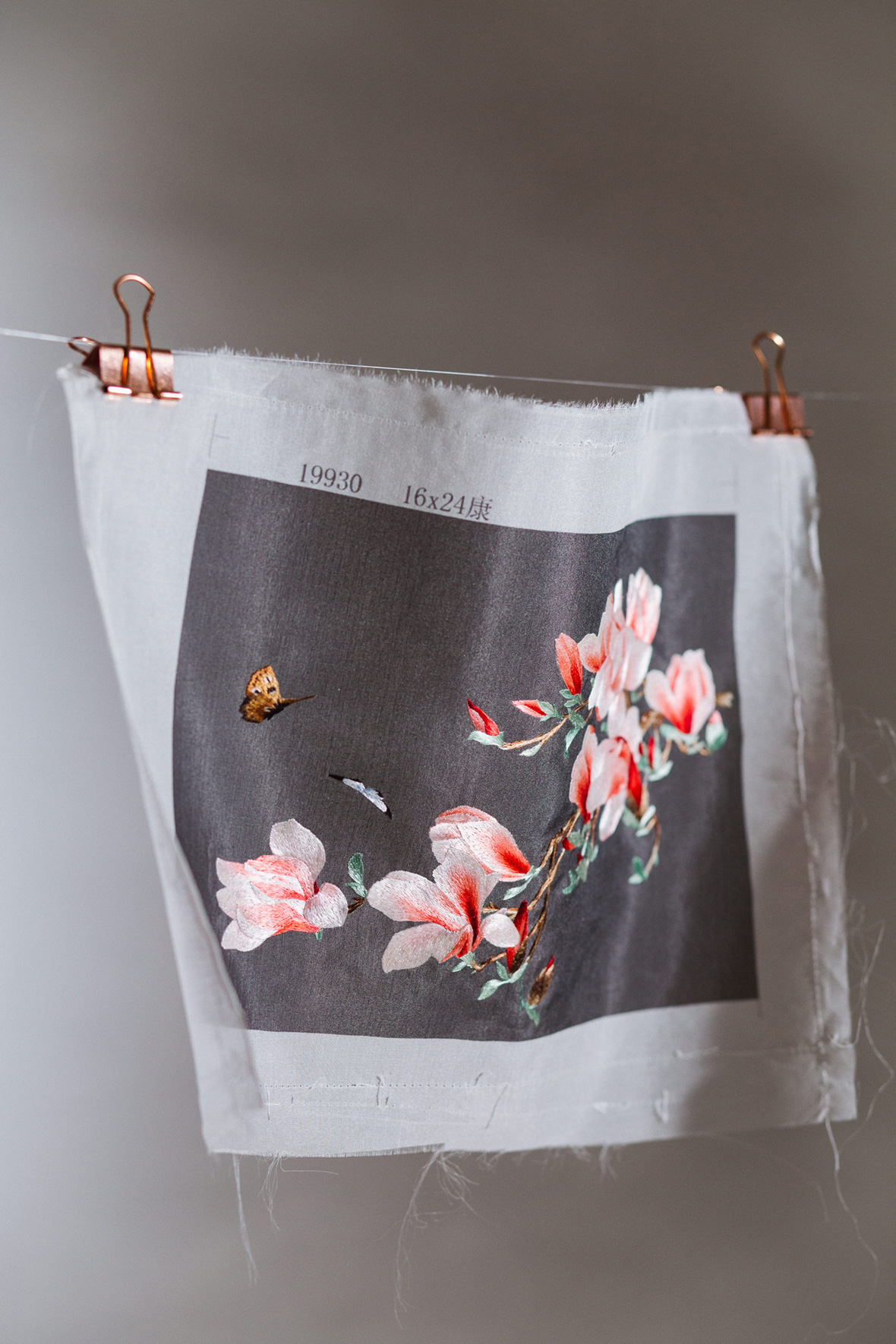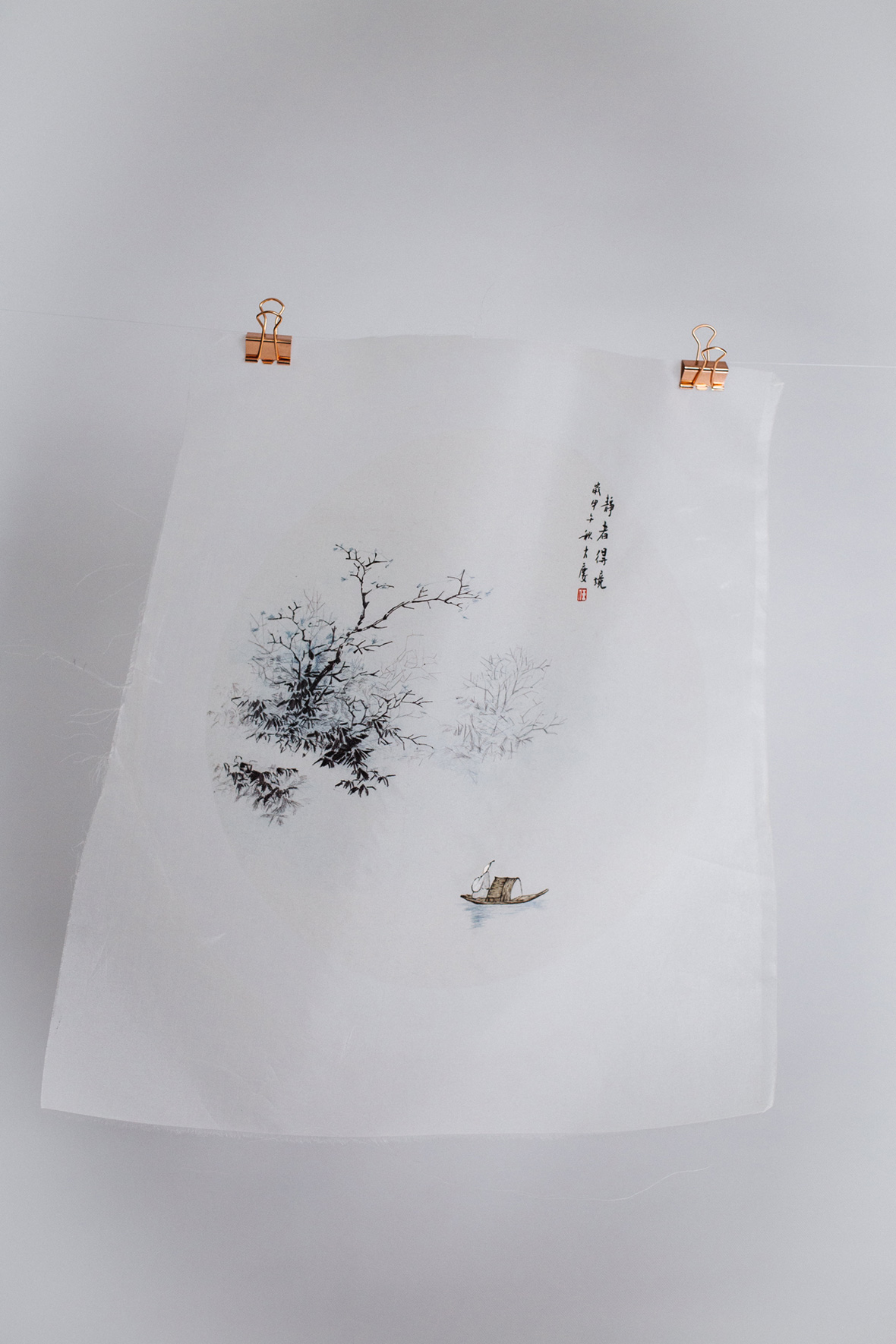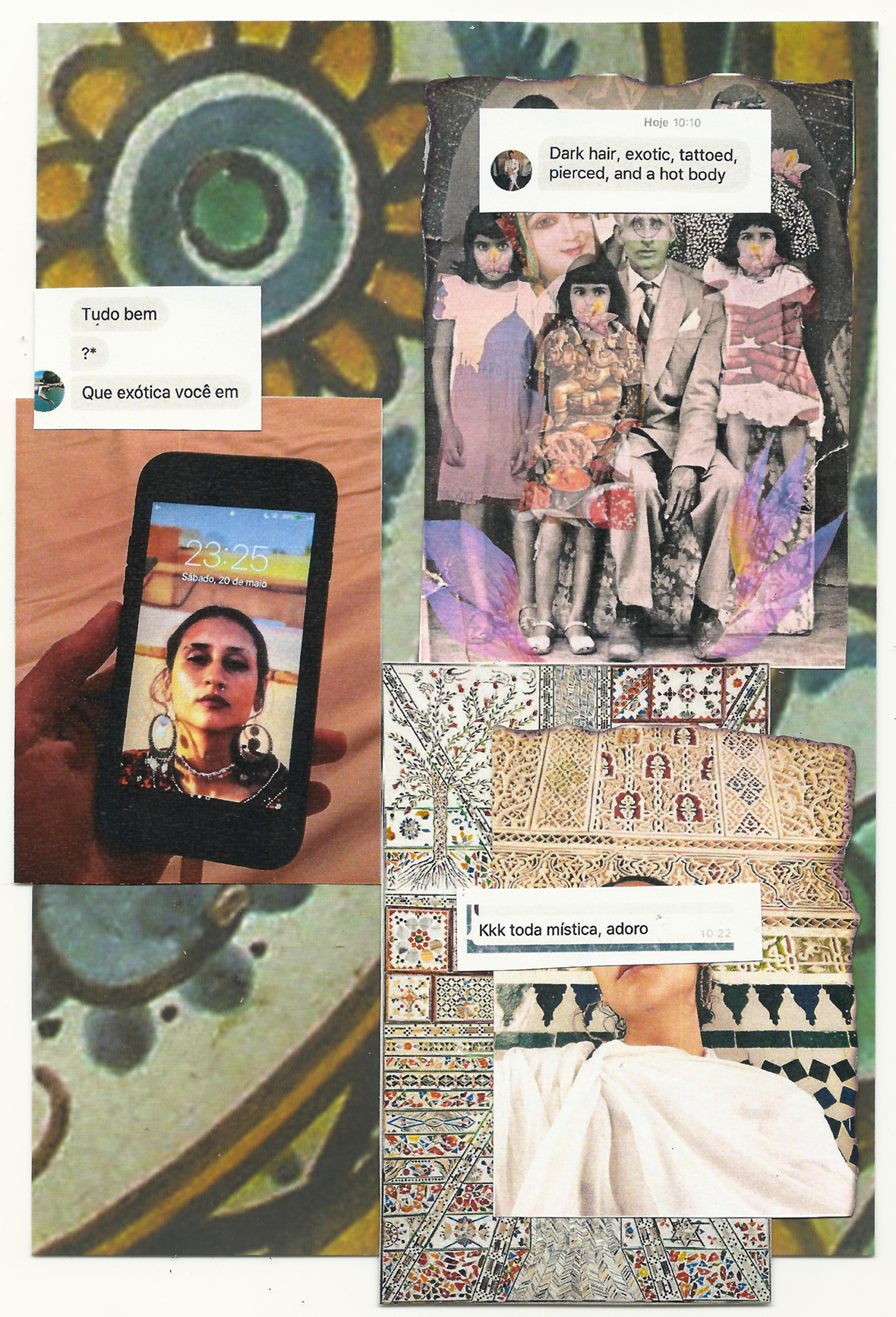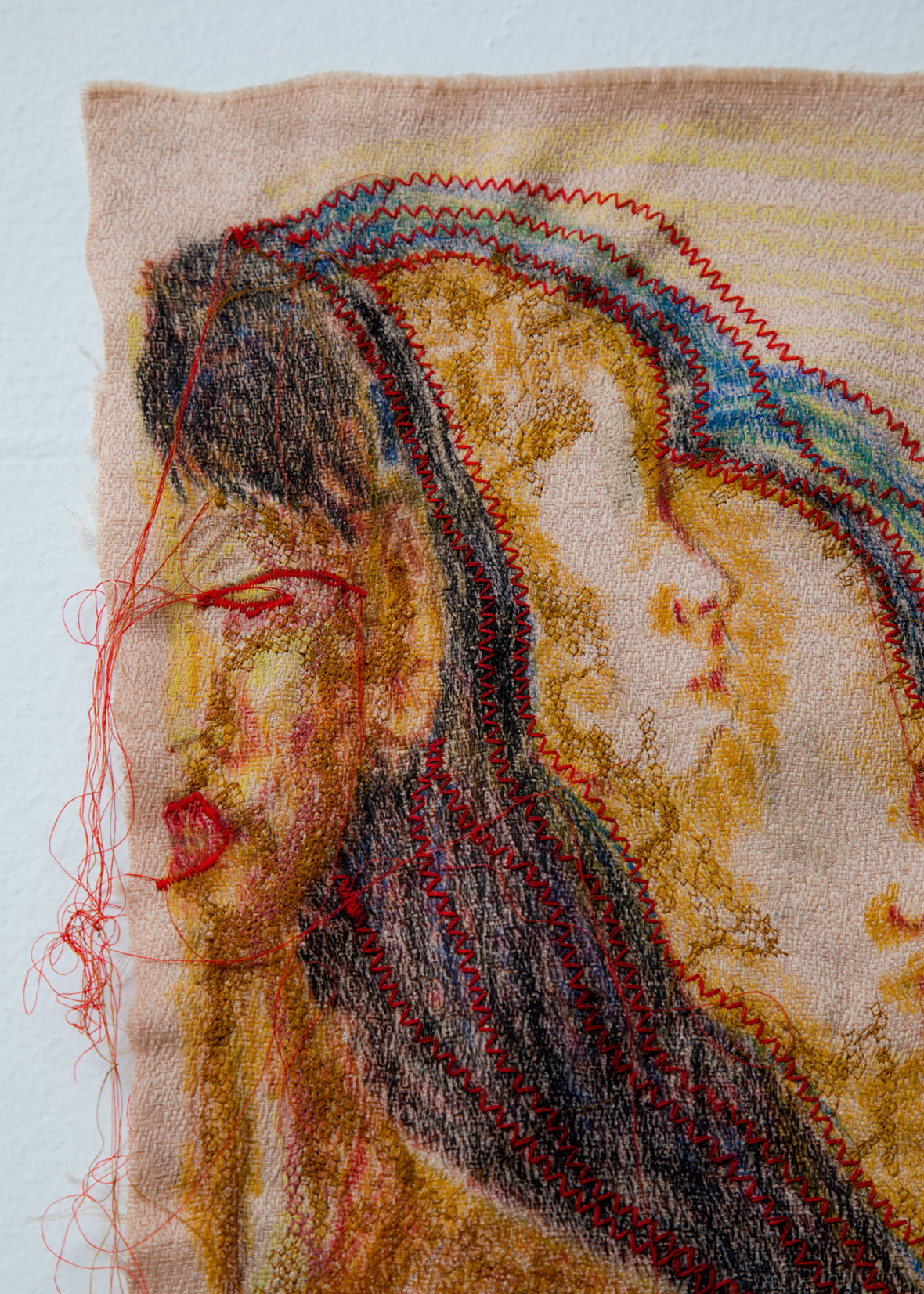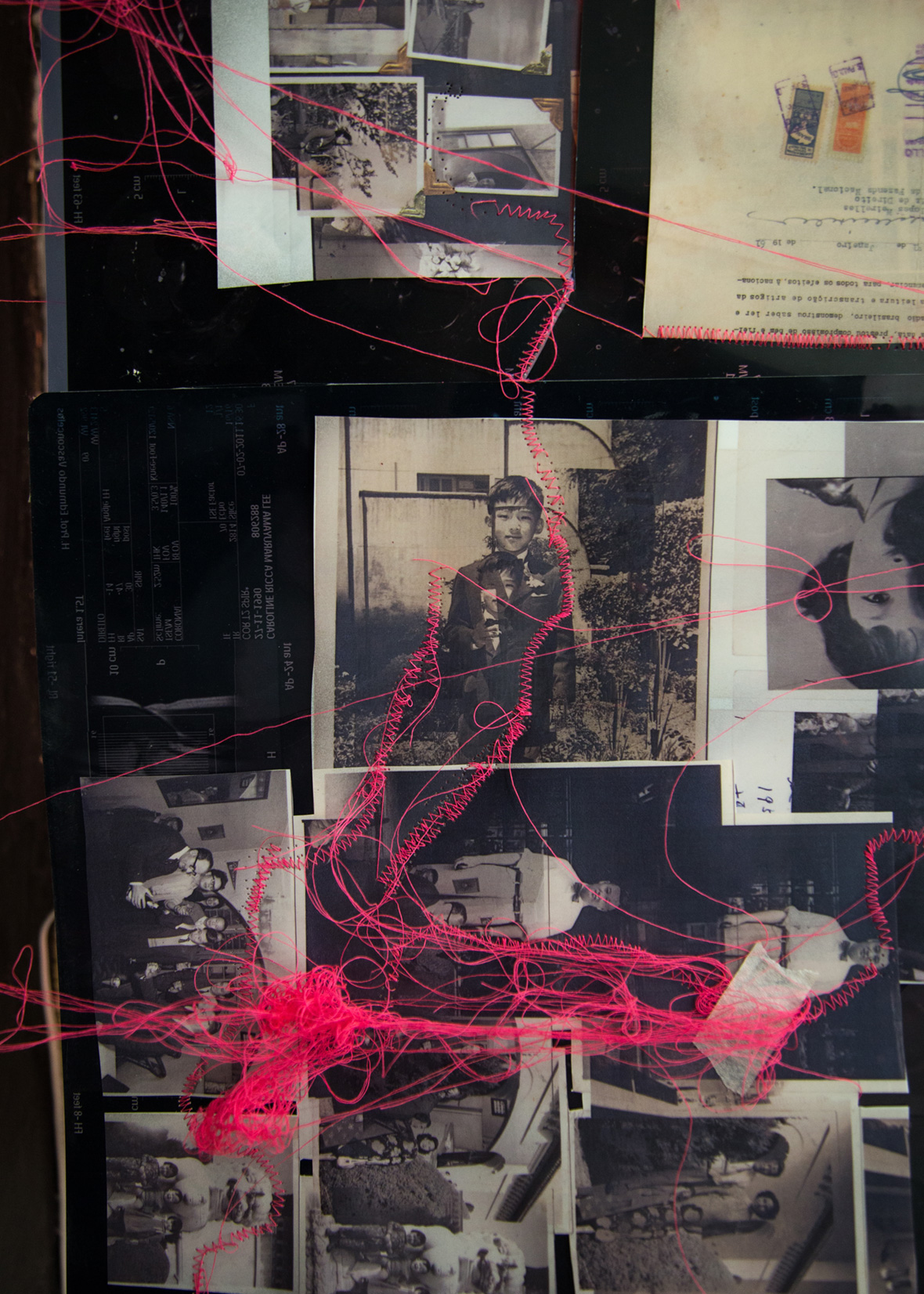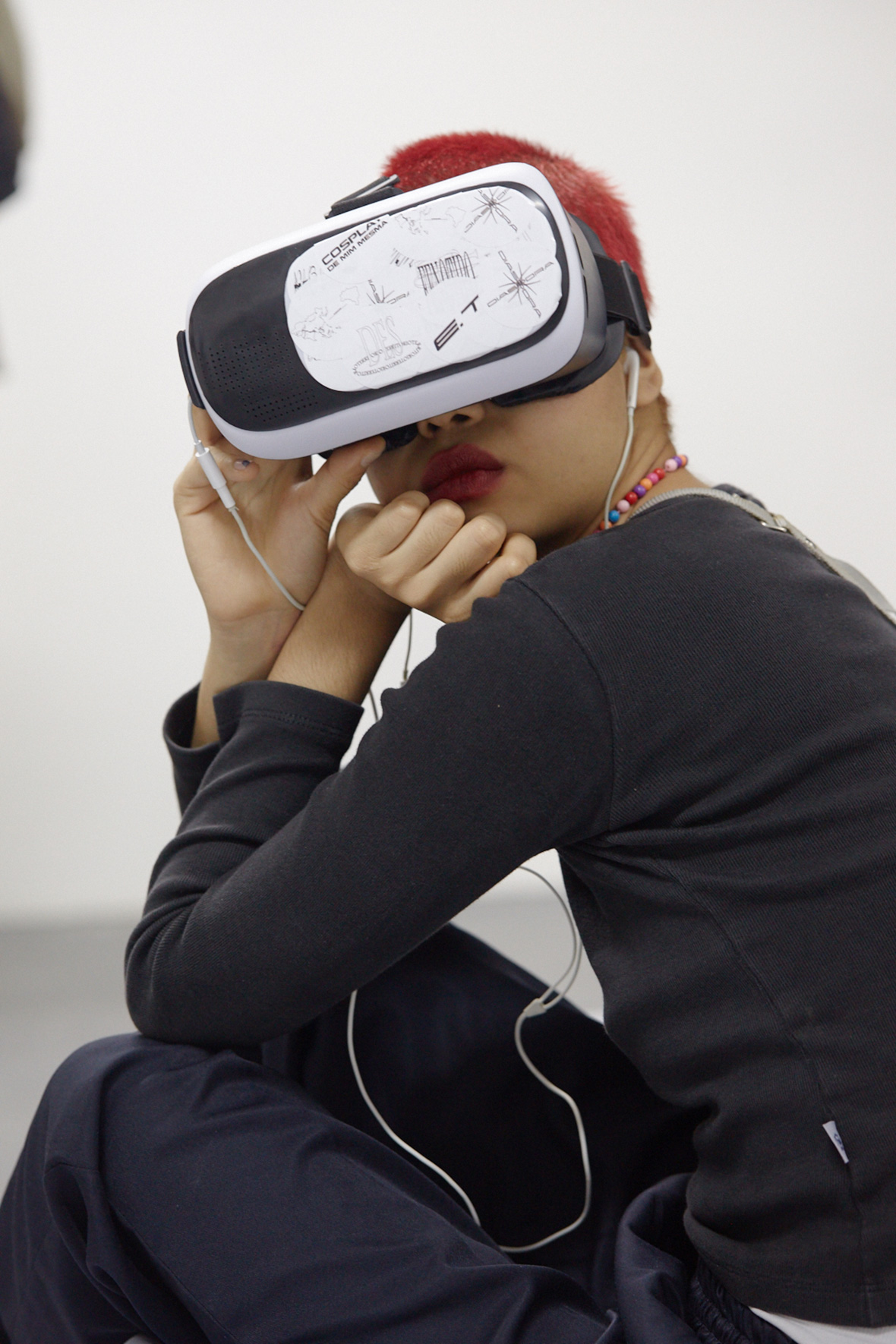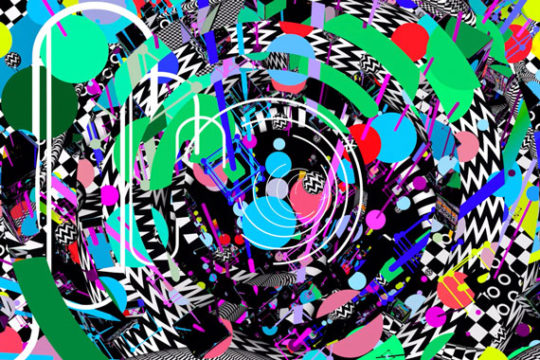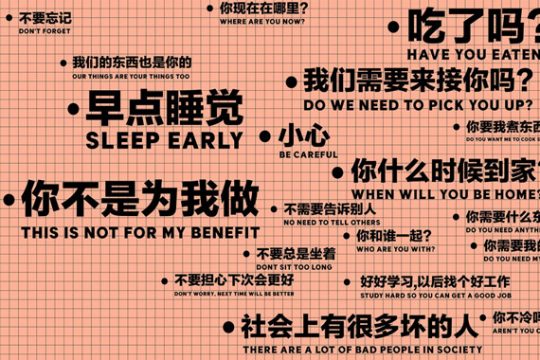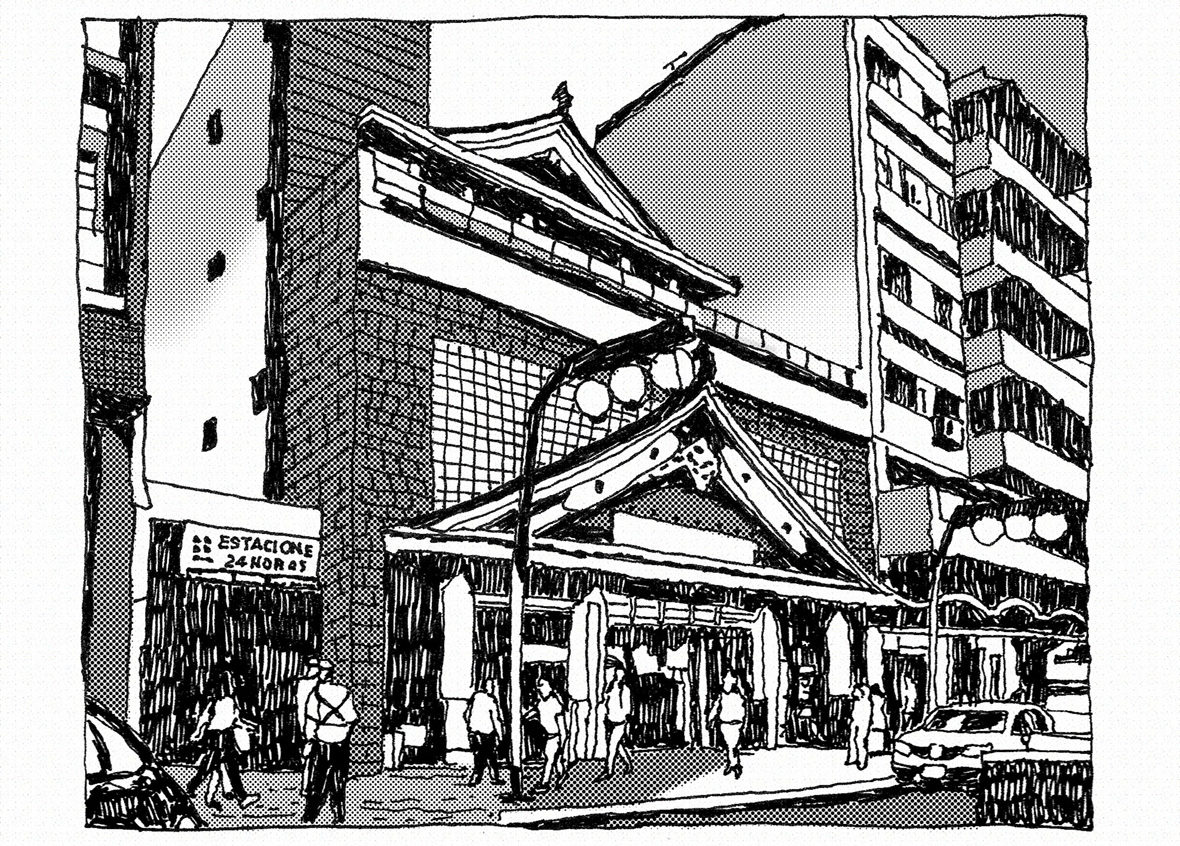
This year, the “Stop Asian Hate” movement began in response to the rising number of hate crimes against Asians triggered by the global pandemic. The movement helped shed light on how xenophobia and racism have always been part of the Asian immigrant experience in the West. The American narrative is predominant, or else the discourse is about what happens in Europe or other Anglo-Saxon countries. But little is ever said about what Asian immigrants and their descendants face in the developing world.
Unbeknownst to most, Brazil is home to many Asian diasporic communities. The largest of all is the Japanese, which, with over two million people, is the biggest ethnic Japanese community outside of Japan. They’re succeeded by the Chinese, with roughly 360,000, and Koreans, with about 50,000. South Asians, even though in a lesser number, have also made their way to Brazil in search of a better life.
To understand the Asian immigrant experience in Brazil and find out what it means to be Asian-Brazilian today, we talked to five artists whose families immigrated to the country from Japan, China, Taiwan, and India. They told us their families’ stories, their struggles growing up in Brazil as Asian descendants, and their experiences with the recent rise in xenophobia. Their narratives converge in many ways and are permeated by a common sentiment of ethnocultural confusion, invariably reflected in their artworks.
今年,针对亚洲仇恨的暴力和犯罪行为与日俱增,“禁止亚裔仇恨”(Stop Asian Hate)运动就此展开。这场运动揭示了西方国家一直以来对亚洲移民的仇外心理和种族歧视等问题。此类事件大多发生在美国,其次则是欧洲和其他白人国家。然而,似乎很少有人谈及亚裔移民在海外发展中国家的境遇。
你可能不知道,南美洲巴西其实也有着体量庞大的亚裔移民社区。其中最多的是日本人,有二百多万人口之多,是世界上除日本本土以外最大的日裔社区;其次是中国和韩国人,分别有将近36万和5万人;以及还有少数南亚人,他们为了更好的生活来到了这里。
为了了解亚裔移民在巴西的经历、了解今天的亚裔巴西人,我们采访了五位艺术家,他们的祖籍分别来自日本、中国大陆、台湾和印度。他们讲述了各自的故事:作为亚裔后代在巴西成长所遇到的困难、以及在最近仇外情绪上涨期间他们的一些经历。他们的故事在许多方面相互交叠,都透露着一种对身份的困惑与迷茫,并都展现在他们的艺术作品当中。
André Terayama, 31
Through his work, illustrator and performative artist André Terayama explores the conundrum of his Japanese-Brazilian identity. In an ongoing series of black-and-white illustrations, he depicts São Paulo’s central district of Liberdade, locally known as “Japantown.”
Terayama’s great-grandparents immigrated to Brazil in the 1920s and 30s, escaping growing poverty and the rise of fascism in Japan. At the time, Brazil welcomed immigrants to work on coffee plantations. But Brazilian landowners, used to slave labor until then, offered only the harshest conditions. “It was traumatic for them,” Terayama says. “They were sent to a coffee plantation and became bonded laborers. As their debt increased, they had to escape during the night to start a new life all over again.”
Back then, the Brazilian elite deemed Japanese immigrants undesirable. They defended the national “whitening” of the population by promoting European migration instead. Things got worse with the eruption of the Second World War when the Japanese were considered enemies of the nation. “There were racist and pseudo-biological laws against Asians. My family had to distance themselves from their community to avoid being targeted. It was the idea of the yellow peril—one still latent and very close to us today,” Terayama says.
Growing up, Terayama was an easy target for bullies who didn’t shy away from exploiting his looks in every offensive way imaginable for a kid. These were often public displays of humiliation in front of his school teachers—and not condemned by them. “My experience growing up as an Asian-Brazilian was extremely alienating and deprived me of any common sense of identity,” he says.
But he found refuge in Japanese mangas, animes, and live-action series—all broadcasted daily over children’s television programs in the 1990s—and in video games. “All these things were very familiar to me, but simultaneously very distant,” he says, adding that this early exposure to Japanese pop culture provided him with an uncanny feeling of satisfaction.
Later, while studying art at São Paulo State University, Terayama noticed the lack of Asian references and the overbearing bias toward European art, even when the former heavily influenced the latter, which is the case with impressionist paintings. “The juxtaposition between a Monet and a Hiroshige, for instance, rarely takes place,” he notes. “That shows the importance Brazilian scholars give to European culture.”
In the 1980s, with the Japanese economy thriving under American-style capitalism, things changed, and there was a shift in how Brazilian society perceived Japanese-Brazilians. They were suddenly seen as allies of the West, a model minority earning its place in society through hard work and dedication. But this shift is in itself problematic. “It implies an inferior position and the expectation of a particular behavior from Japanese descendants. Their presence is changed to fit a hegemonic and narcissistic view of things,” Terayama explains.
His illustrations of the Liberdade district reveal a juxtaposition of cultures, habits, and symbols. Liberdade is where many Japanese immigrants flocked in the early 1900s looking for affordable rent prices. As a cunning homage, the area is now adorned with traditional Japanese lanterns and even has storefront signs only in Japanese. But the area is also a conspicuous site for Afro-Brazilian history, as it housed an infamous square for the execution of runaway enslaved workers.
Liberdade is also central to other Asian communities in São Paulo. It’s an area where Chinese, Taiwanese, and Korean communities also gather for business and cultural festivities. To André, the series of illustrations represents the “coexistence of ghosts that haunt the individual imagination. But also how to imagine a possible future for these issues.”
André Terayama, 31 岁
André Terayama 是名插画师与表演艺术家,希望通过作品探索日裔巴西人的身份谜题。目前,他正在创作一组插画系列,以黑白两色呈现了圣保罗中心的东方街(Liberdade)的景象,这里当地人又称之为“日本城”。
上世纪二十至三十年代,André 的曾祖父母为了逃离日渐贫困的生活和日本法西斯主义的崛起,决定移民巴西。当时,海外移民通畅会到巴西咖啡种植园里工作。但那时候绝大多数巴西地主都以奴役劳工著称,移民伴随的是苛刻的生活条件。André 说:“这对他们来说是很痛苦的经历。他们被送到一个咖啡种植园,成为抵债劳工。随着债务不断加重,他们最后不得不趁夜逃离,以重新开始新的生活。
那段时期,巴西精英阶层并不待见日本移民。相反,他们希望更多欧洲移民的加入,来维护国家“白化政策”的落实。第二次世界大战的爆发令巴西人对日本的看法直线下降,当时的日本人被视为整个巴西的不速之客。“当时还出台了针对亚裔的种族主义和科学种族主义的相关法律条款。我的家人不得不与日裔社区保持距离,以避免成为被攻击的对象。这就是所谓的‘黄祸’,其至今仍然潜伏在我们四周,”André 说道。
从小到大,André 时常被霸凌者盯上,他们用各种糟糕的言语来嘲笑他的长相,堂而皇之地在学校老师眼前羞辱他,却不会受到谴责和追究。他说:“作为一名亚裔巴西人,过去的成长经历让我觉得极度不适,格格不入的处境让我丧失了任何身份认同感。”
日本的漫画、动画和电子游戏产业为他带来了慰藉,九十年代日本动漫曾一度在巴西盛行,一些经典的作品在当地儿童电视节目中频繁播出。他说:“这一切对我来说既熟悉又遥远。”他补充道,儿时接触的日本流行文化带来了前所未有的满足感。
后来,André 在圣保罗州立大学 (São Paulo State University) 攻读艺术专业。他留意到当时巴西人对亚洲艺术的漠视,并一味盲目地崇拜欧洲艺术,即使是亚洲曾对欧洲产生过重要影响的艺术门类,比如印象派绘画,这种现象依然存在。他指出:“比如他们很少会将莫奈和安藤广重的作品相提并论,这正体现了巴西人对欧洲文化的偏向。”
上世纪八十年代年代,随着日本经济在美式资本主义影响下的复苏,情况渐渐发生了扭转。日本经济通过战后努力,在全球占据一席之地,摇身一变成为西方国家的盟友。但 André 认为,这种转变本身便带有一种讽刺。他解释道:“日本的形象之所以被扭转,不过是为了迎合一种霸权式和自恋的观点。劳动者的社会地位依然很低,反而被资本家寄予厚望。”
二十世纪初,许多日本移民为了廉价的租金,涌入东方街。作为一种刻意的致敬,装饰着传统的日本元素,如日式灯笼,还有一些只写着日语的店面招牌。这一切在 André 看来虚伪至极,因为这里坐落了曾经被用来处决逃跑奴隶的广场。而他笔下的东方街,则更接近于现代的样子。
东方街也是圣保罗其他亚裔社区的中心。中国大陆、台湾和韩国群众也会在这里聚集,进行商业和文化活动。对 André 来说,这一系列插图代表了“萦绕在每个亚裔人心中的命运共同体。同时也带有对未来的寄望。”
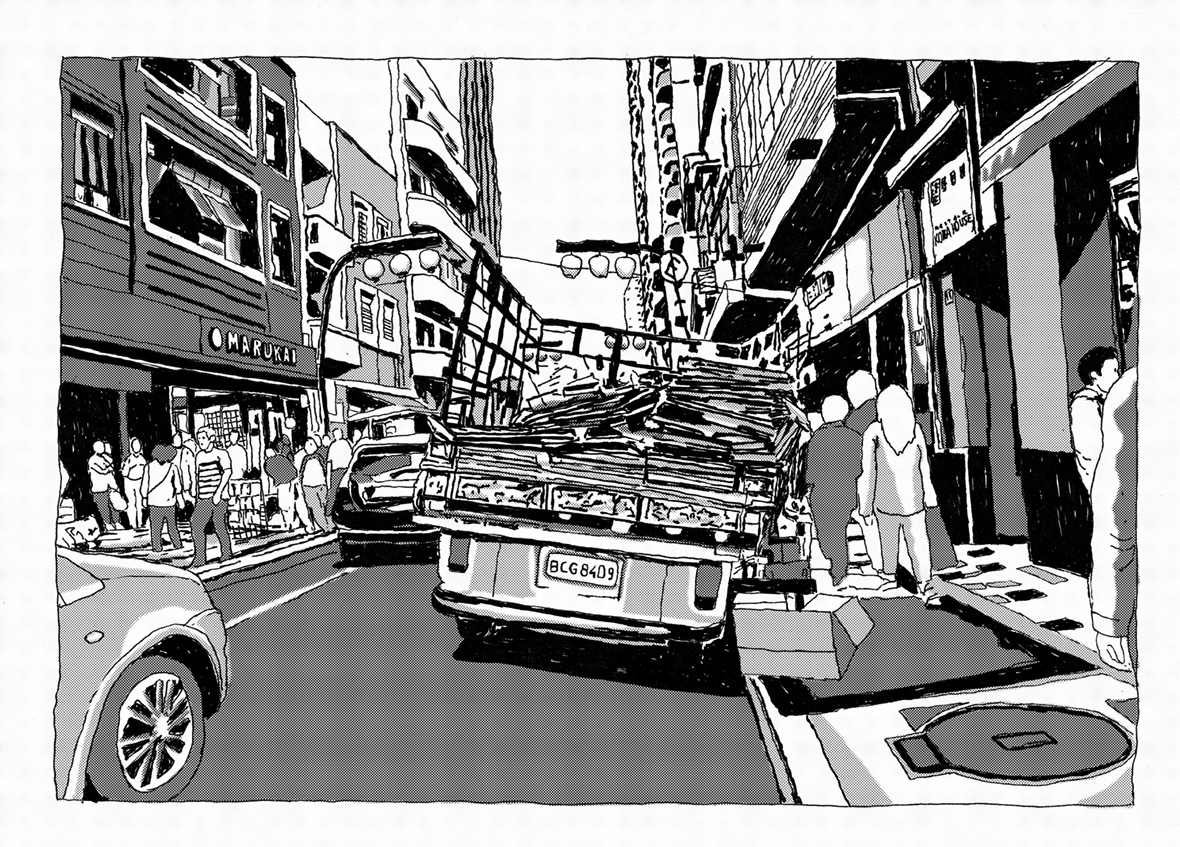
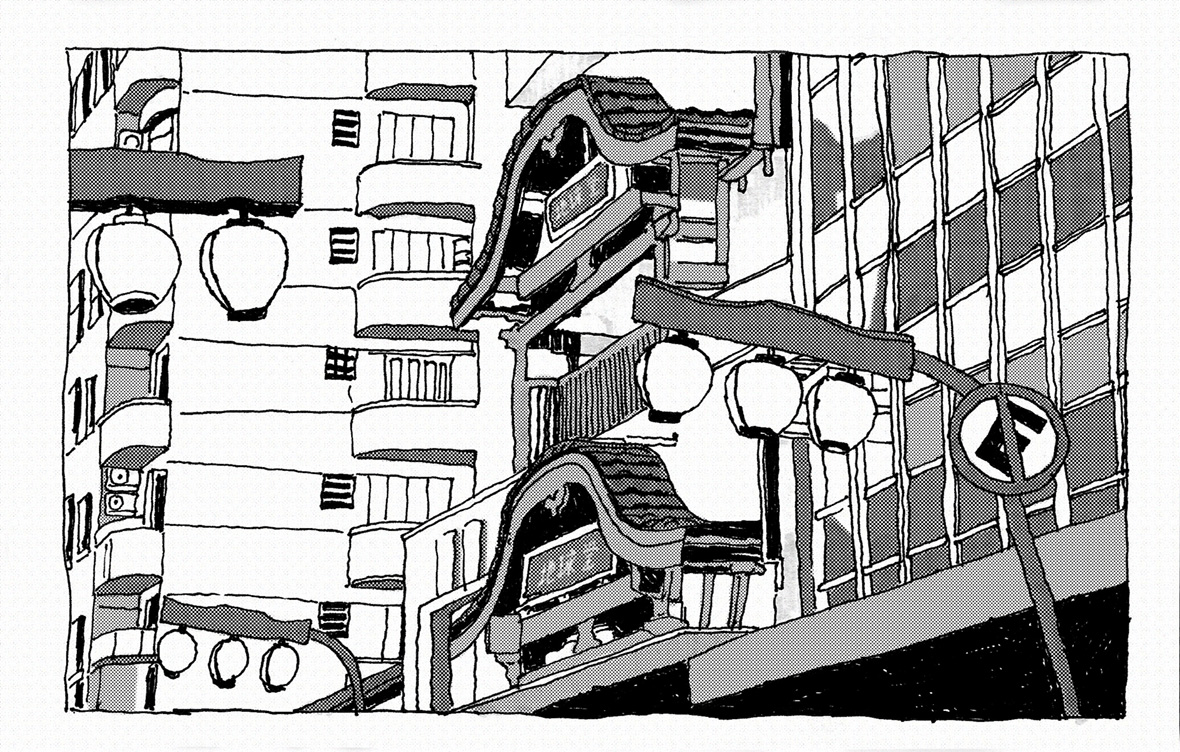
Wendy Cao, 26
Textile artist Wendy Cao is the daughter of Chinese parents. Now based in Paris, she originally grew up in São Paulo, where she grew up afflicted by a constant feeling of estrangement. Her work, characterized by Chinese embroidery in contemporary style, derives from her quest to understand her Chinese roots.
Cao’s parents migrated to Brazil to start a new life following the cultural revolution. After they arrived, they found that fitting into Brazilian society and finding work was challenging. “My father often suffered xenophobic attacks when people saw him practicing qi gong,” Cao says. “As my mother studied to get into university, still learning Portuguese, her classmates thought it was ridiculous that a Chinese woman, married and with kids, would aspire to be a doctor.” But Cao says her parents overcame the obstacles in the end: her father became a famous qi gong master and acupuncturist, and her mother graduated from the school of medicine of São Paulo University, considered the best in Latin America.
Growing up, Cao herself faced prejudice for being different. She struggled to fit in by conforming to Western standards as much as she could. “I went through a long process of refusing my background because of all the negative implications. I found myself rejecting Chinese culture—as a result, I also disdained myself,” Cao says. But her efforts were in vain. “Every day, someone makes sure to tell you that you’re Chinese. Growing up as an Asian-Brazilian was to feel Brazilian, but to be constantly reminded that I’m not entitled to such sentiment.”
But eventually, Cao questioned her feelings, and she grew interested in understanding her parents’ lives before moving. In 2019, she spent four months in a rural village near Suzhou, learning Chinese silk embroidery techniques from a group of local artisans at the atelier of Lu Fuying.
Cao’s experience in China was a huge culture shock, but it also was an invaluable opportunity for her to connect with her cultural roots. “I felt emotional when I saw a group of people practicing tai chi in China,” she remembers. “And I cried for having denied my origins for so many years. It was a mixture of sadness and happiness. I knew that, from that moment on, I was more connected to my roots.”
Still, Cao’s sentiment of non-belonging continued in China, where she was always seen as a foreigner due to the way she dressed and acted. She then realized that being Asian-Brazilian is to have a split identity. “For years, I felt as if in a limbo, a person without a collective background, without identity,” she says. “Nowadays, with the surge of the decolonizing ideas, I’m trying to find where I belong without necessarily belonging.”
Wendy Cao, 26 岁
纺织艺术家 Wendy Cao 的父母来自中国。Wendy 现居巴黎,但打小在圣保罗长大,在那里她一直因为局外人的感觉而备受折磨。她的作品以当代中式刺绣为特色,这源于她对故乡根源的探索。
Wendy 的父母在文化大革命后移居巴西,开始了新的生活。抵达巴西后,他们发现想要融入巴西社会是一件非常困难的事。Wendy 说:“我父亲因为练气功,经常遭到仇外者的攻击。母亲努力考上大学,学习葡萄牙语,她的同学都认为,一个结了婚有了孩子的中国女人竟然想成为一名医生,实在是荒唐至极。”但 Wendy 的父母最终克服了生活中的苦难:父亲成为了著名的气功大师和针灸师,而她的母亲也从圣保罗大学医学院顺利毕业,那里是拉丁美洲最顶尖的医学院。
成长过程中,Wendy 自己也因为肤色的与众不同而遭受偏见。她曾努力按照西方社会的标准来融入社会。“因为受到身边负面的影响,我有很长一段时间很抗拒自己的文化背景,抵触中国文化,也因为这个原因,我曾一度很讨厌自己。”但她的努力都是徒劳。“每天都有人在提醒你,你是中国人。作为一名巴西的亚裔,我好像没有资格融入进当地社会。”
后来,Wendy 开始反思自己之前的想法,并开始想要去了解更多父母年轻时在中国的生活。2019 年,她回国到苏州生活了四个月,在卢福英工作室跟当地一群工匠学习中国丝绸刺绣工艺。
Wendy 在中国的经历是一次巨大的文化冲击,同时也是一次宝贵的机会,让她与自己的文化根源维系起来。她回忆道:“我看到很多人在公园打太极拳,当时激动坏了。我哭了,因为这么多年来我一直在否认自己的出身。脸上都是难过又幸福的泪水。我知道,从那一刻起,我与自己的根更紧密了。”
尽管如此,Wendy 在中国也有局外人的感觉。因为她的穿着和行为方式,人们总是把她视为外国人。后来她意识到,作为生活在海外的亚裔,就意味着始终是身份分裂的状态。她说:“多年来,我总觉自己被孤立,没有集体背景,也没有身份认同。如今,随着去殖民化思想的兴起,我试图寻找自己的归属,但不执着于融入。”
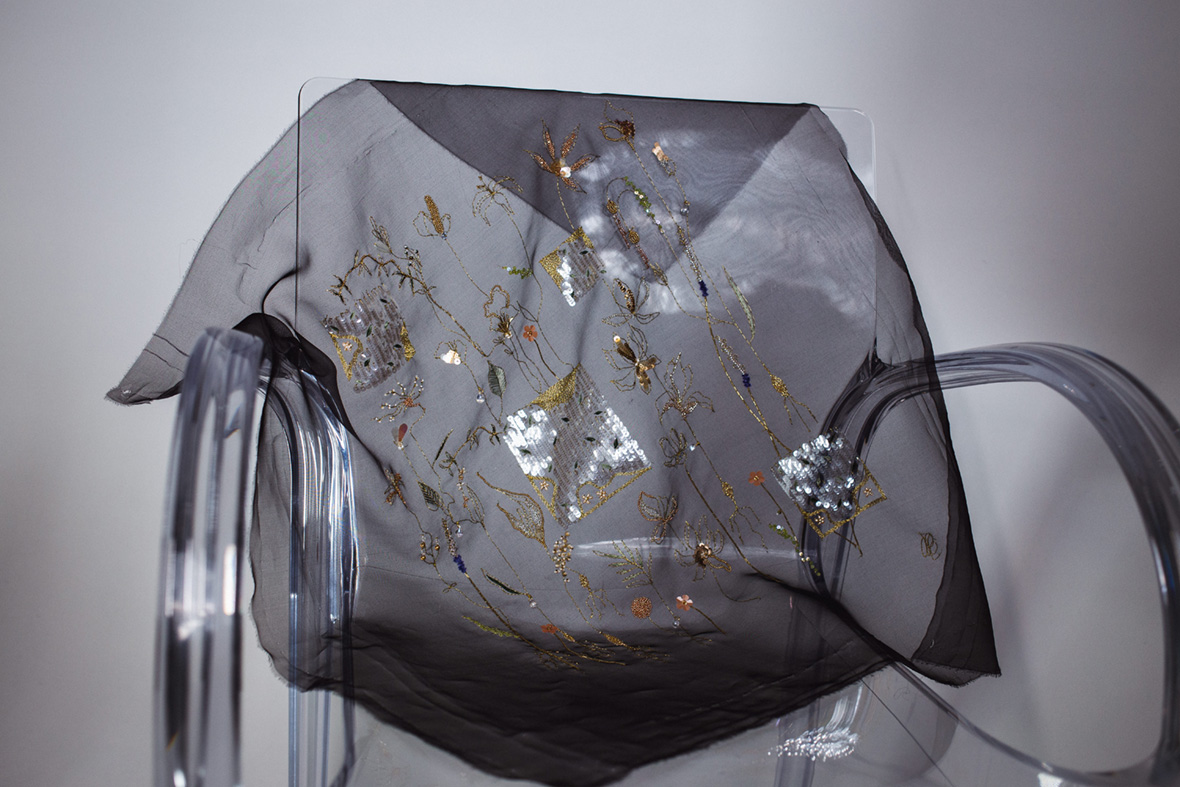
Singh Bean, 27
Multimedia artist and music producer Singh Bean is of Lebanese-Syrian and Indian descent. Her collage art offers a glimpse into both her subconscious and her experiences as a South Asian-Brazilian woman.
Singh’s great-grandparents on both sides were the ones who immigrated to Brazil. On her father’s side, they came from the Middle East, escaping the recurrent political turmoils in the region. On her mother’s side, her great-grandfather, a Sikh, left India during the Indian independence movement after being arrested alongside Gandhi for resisting British colonial rules. Once in Brazil, he chose not to display his cultural habits and rituals or even wear his turban in public. Since there was nowhere for Sikhs to assemble or worship, he saved his faith for the safety of his home.
When comparing the immigrant experience on both sides of her family, Singh thinks her father’s side might have had it easier. For one, Syrian and Lebanese immigrants went in large numbers to Brazil, even outnumbering the Japanese. But above all, there’s also the fact that these immigrants are often perceived as white. “There is white ‘passability’ for Arabs here,” she says, adding that many prominent Brazilian politicians who are of Arabic descent, including former presidents, are seen as “white” by the public at large. “On my mother’s side, because the Indian diaspora was not large, people didn’t understand my great-grandfather. Because his skin was dark, they considered him a “black person.”
As for her own experiences, “what affected me the most was being fetishized by men,” she says. This was what led her to create EXÓTICA, a collage series juxtaposing photos of herself and her family with screenshots from text messages she received from men. “They would call me ‘exotic’ or ‘mysterious,’ or else they would say something about my skin or ancestry. People still have this impression that the orient is something mystical and they take it to a sexual level—the Kama Sutra, right?” Interestingly, while working in this series, Singh began to question how much she also fetishizes herself. “Sometimes, in the quest for an identity, this happens,” she says.
Nowadays, one thing is clear: she doesn’t want to be labeled. Singh doesn’t mind being referred to as an Asian-Brazilian artist, but this should not be what validates her work. “We see a white artist only as an artist. He can talk about whatever he wants because he has space. A non-white artist is like a quota—they have to talk about their hurdles.”
Above all, Singh wants the freedom to express whatever she wants with her work, including trivial and ordinary feelings. “I am much more than just my ancestry. We’re all different human beings,” she says.
Singh Bean, 27 岁
多媒体艺术家、音乐制作人 Singh Bean 是黎巴嫩、叙利亚和印度三国混血。她所创作的拼贴艺术不但呈现出自己的潜意识世界,更展现了作为一名南亚裔女性在巴西生活的经历。
Singh 一家人来到巴西已有很长的时间。父亲辈当初为了逃离中东地代起伏的政治动荡来到巴西;母亲的曾祖父则是一名锡克教徒,在印度独立运动期间离开了印度,在那之前他曾因为与甘地并肩反抗英国殖民统治而被捕。到了巴西后,母亲的曾祖父选择隐藏自己的文化、宗教习俗。由于没有锡克教徒场所,他为了家人的安全而隐藏了自己的信仰。
对比父母双方家庭的移民经历,Singh 认为父亲一家要更顺水推舟。当时叙利亚和黎巴嫩移民大量涌入巴西,这些移民普遍被视为白人。“阿拉伯人常常被当作白人对待,”她说道,并表示包括前总统在内的许多著名阿拉伯裔巴西政治家在公众眼中都是“白人”。“而在我母亲这边,因为印度移民很少见,人们都觉得我的曾祖父很奇怪。因为他皮肤黝黑,人们把他视作为‘黑人’”。
谈及她自身的经历,她说:“对我造成负面影响最大的是当地男性的有色眼镜。”这促使她创作了《EXÓTICA》拼贴作品系列,将她和家人的照片与她收到的男性短信截图放在一起。“他们说我‘有异国情调’或‘很神秘’,或是调侃我的肤色和血统。人们仍然觉得东方是某种神秘国度,并且把它往性的层面上去联想,比如那部《卡马经(Kama Sutra)》。”(《卡马经》被视为印度的“爱经”,后成为房中术的代名词。)Singh 在创作该系列的期间,开始意识到自己对根源文化的迷恋。
Singh 并不介意被称为亚裔巴西艺术家,但这不应该成为描述或评价其作品的因素。“我们在谈论白人艺术家时只会把他们看作艺术家。他想说什么都可以,因为他有这样的自由。而非白人艺术家就像是被限制住了,观众想看到的是这些艺术家谈论自己面临的困境。”现在的她不想被贴上任何标签。
对 Singh 来说,最重要的是在自己的作品中拥有表达的自由,包括表达琐碎的问题或平凡中的感受。她说:“我并非由我的血统来定义。我们都是不同的个体”。
Caroline Ricca Lee, 31
Artist, curator, and researcher Caroline Ricca Lee, who goes by the pronoun “they,” investigates topics like Asian identities from Latin America, decolonial feminism, and the social construct of gender. Lee is particularly vocal about their ideas, taking part in multiple talks and debates. In 2017, they founded the first Asian feminist collective in Brazil, Lótus.
Like Terayama, their mother’s family migrated from Japan to work on coffee plantations. Their father’s family left China in the 1960s, migrating through Macao. “That’s how they discovered ‘this place called Brazil,’ which also shared the Portuguese colonial root,” Lee says.
Lee thinks it’s worth mentioning that the Chinese immigrants who arrived in Brazil from the mid-1800s onwards were seen as precarious workers, allowed only meager compensations for extenuating working hours. They alert that such stereotypical and orientalist views lingered until today. “The homogenization of all Asian ethnicities is a discriminatory construct that operates within a colonial and imperialist worldview. It stereotypes and suppresses different cultures, denying them the right to an identity,” they say.
In Brazil, such views now meet the cacophonous discourse of far-right President Bolsonaro, who proclaims himself a fierce anti-communist. “The anti-communist rhetoric—in other words, the racist, misogynist, and xenophobic rhetoric—has taken hold in our society too, and there has been an increase in physical violence against Asian-Brazilian communities, especially when they are Chinese.”
However, as an activist, Lee believes they also have to fight intolerance and racism surging within Asian communities and stop the myth of the “model minority” from being mistaken for something positive, as it sometimes is. Regarding the latter, besides denoting an inferior position to East Asians, as noted by Terayama, Lee reminds us that the term is inherently oppressive towards black, mixed race, and indigenous people. It positions Asians as a more desirable contingent by the white population, who are indisputably at the top of the social hierarchy.
To Lee, the acceptance of such a label by Asian descendants grants them class privileges, underlining their part in structural racism. In any case, this privilege is nothing but an illusion. As Lee explains, “recently, we can see how we quickly went from being a model minority to becoming the ‘Chinese virus.’ After all, the coronavirus has been racialized. In the end, the condition of East Asians remains fluctuating according to the wishes of the white supremacy.”
Lee firmly believes, “It is perfectly feasible that a new generation attempts to deconstruct the stereotypes placed on Asian narratives. A new formulation from our perspective is the revolution of our times,” she says.
Caroline Ricca Lee, 31 岁
Caroline Ricca Lee 是非二元性别者(因此以 TA 称呼),拥有艺术家、策展人和研究员的多重职业身份。TA 喜欢研究拉美亚裔身份认同、去殖民化女权主义和性别的社会建构等问题。平时热衷于表达自己的想法,曾参加很多会谈和辩论。2017年,TA 在巴西成立了亚洲第一个女权主义团体 Lótus。
和 André 一样,TA 的母亲也是从日本移民到巴西,进入咖啡种植园工作。父亲一家则是在上世纪六十年代离开中国,经由澳门移民到巴西。Caroline 说:“巴西本就是一个多民族国度,那里曾被葡萄牙殖民。”
Caroline 认为值得一提的是,十九世纪中期的中国移民曾被巴西人视为是危险人物,他们只能找到工时尚可、薪酬微薄的工作。守旧的刻板印象和东方主义观点直到今天仍然存在。TA说:“在殖民主义和帝国主义的世界观中,普遍存在将所有亚洲种族同质化的行为,这本身带有歧视性。它会形成刻板印象,压制不同文化,剥夺不同个体的差异性。”
巴西极右翼总统博尔索纳罗 (Bolsonaro) 也经常发表此类观点的言论。这名总统自称是一名激进的反共产主义者。“反共产主义言论,即种族主义、厌女和仇外言论,已在当地社会中扎根。随之而来的,是针对亚裔巴西人暴力事件的攀升,华裔更是首当其冲的受害者。”
作为一名活动人士,Caroline 认为巴西当局者必须应对愈演愈烈的种族主义,并希望能打破“模范少数族裔”(Model Minority)这种善意的幌子。Caroline 表示,“模范少数族裔” 这个词本身就是对黑人、混血儿和原住民的压迫。它把亚洲人定义为在白人群体中更受欢迎的群体,而白人又理所当然地处于社会等级的顶端。
在 Caroline 看来,亚裔后代接受这样的标签能获得阶级特权,也突显出他们在结构性种族主义中的角色。但无论如何,这种特权只是一种幻觉。正如 Caroline 所说:“从最近就能看到,所谓的模范少数族裔也能在一夜间变成人们攻击的对象。新冠肺炎在他们口中成为‘中国病毒’,人们甚至荒谬到把流感种族化。归根到底,东亚人的境遇仍然完全取决于白人至上主义的想法。”
Caroline 坚信:“新一代移民完全有能力努力打破社会对亚裔的刻板印象。从我们视角作出的全新表述方式是我们这个时代的革命。”
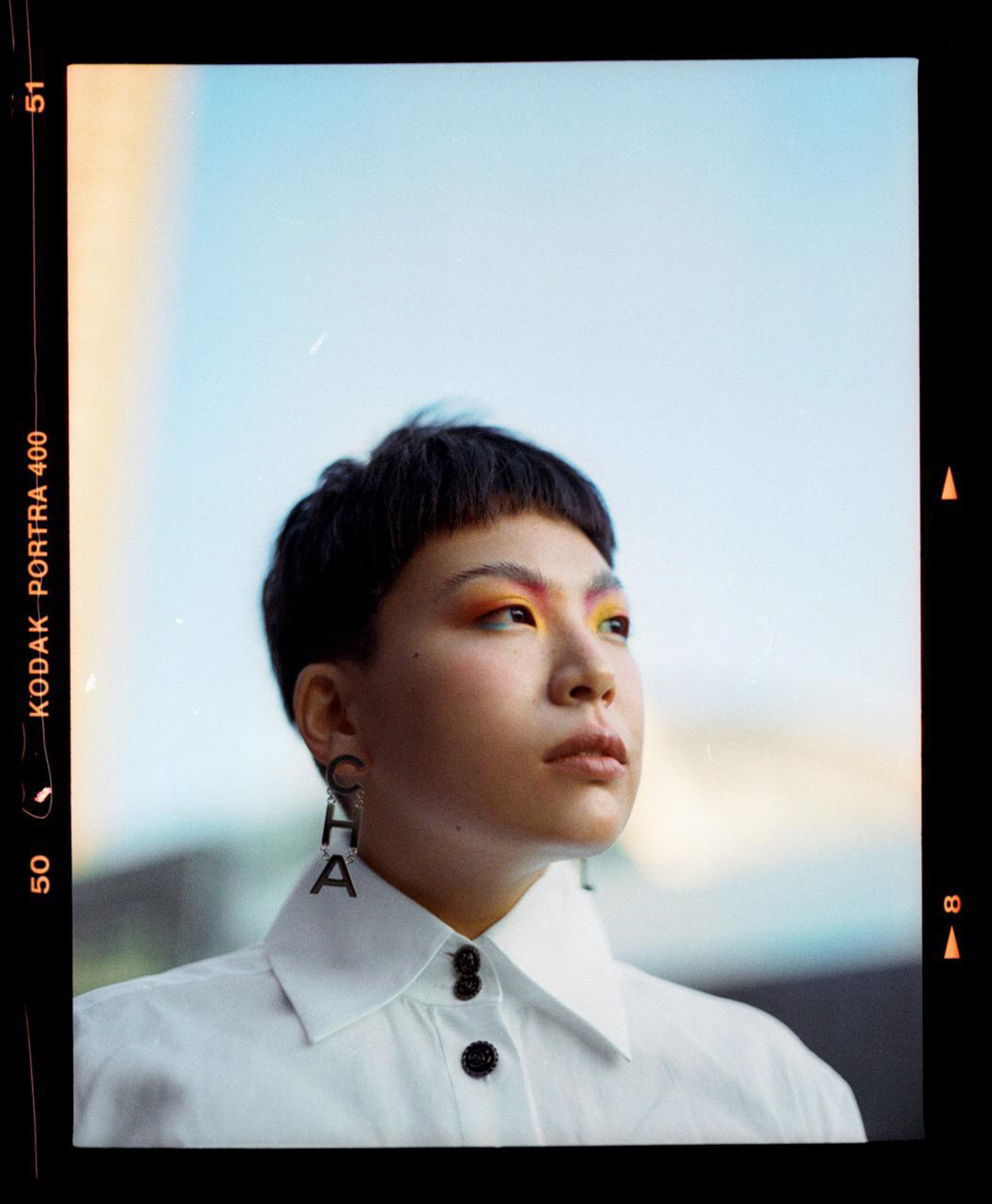
Cyshimi, 23
Viviane Lee, known as Cyshimi—a moniker combining “cyber” and “sashimi”—is also of Chinese descent and prefers the pronoun “they.” Their art reflects the cyber-realm and is permeated by ideas of identity, ancestry, and the body as a social entity.
Cyshimi’s father is from Taiwan; their mother was born in Mozambique, a country that shares the same colonial roots as Brazil and Macao. She’s ethnically Chinese, and because she already spoke Portuguese, she chose to immigrate to Brazil. “My mother would sometimes say she was well-received in Brazil. Other times, she would say people were suspicious of her, and she often had to omit where she was really from, and say instead she was from Taiwan, or merely Asian.” But Cyshimi knows their mother is from a generation that handled xenophobia and racism differently, never giving much importance to such matters.
As for their own experience, they’re pretty straightforward. “Growing up as a non-white child in Brazil makes you notice you’re different from a very young age. We feel alienated and suffer from self-hatred without really understanding who we are. Most of my traumas happened during my childhood or teen years. These are the years when you think it’s all your fault and that you’re alone in it,” they say.
Cyshimi found in Asian activism and art a way to let go of their silent traumas. In the 360-degree video performance Cosplay of Myself, they have a conversation about how their appearance continually defines them in the eyes of society. The piece was part of an immersive installation resembling a bedroom where visitors could lie on a bed and wear a VR headset to watch the video.
The idea of racial deconstruct is central to Cyshimi’s art. “Being an Asian-Brazilian artist is to take part in a de-colonial, non-normative, and non-hegemonic fight.” Like Lee, Cyshimi sees a need to break from the stereotypes and the “fictional identity created by the other,” that defines Asian-Brazilians. “We need to rework what we are beyond these issues,” she says. “Around the world, many people are rebuilding the narrative. In a way, we’re all connected.”
Cyshimi, 23 岁
Viviane Lee 又名“Cyshimi”——由英语的 Cyber(网络)和 Sashimi(生鱼片)组成的合成词。Viviane 也有中国血统,同样更倾向于 “TA” 这个非二元性别称呼。TA 的作品主要反映当下的网络世界,当中渗透着关于身份认同、血统和身体作为社会实体(即把身体作为分配工作的要素)等观点。
父亲来自台湾,母亲出生于莫桑比克,这个国家与巴西和澳门一样有过被殖民的历史。她在种族上属于华人,因为会说葡萄牙语,所以选择移民巴西。“我母亲有时会说,她在巴西很受欢迎。即使这样,人们对她的出身感到很困惑,于是她经常不得不直接跳过关于家乡的话题。”但 Cyshimi 知道,母亲那一代人对于仇外和种族歧视的处理与现在并不相同,他们那一代人更麻木不仁。
谈及自己的经历,TA 直言不讳。“作为在巴西长大的非白人小孩,我们从小就知道自己与众不同,也会因此感到格格不入,自我憎恨,却从未真正了解自己到底是谁。我大部分痛苦的经历都发生在童年或青少年时期。小时候,你往往都会认为这全都是你的错,”TA 说道。
Cyshimi 在亚裔社会活动和艺术中找到了一种疗愈创伤的方式。在沉浸式视频表演《Cosplay of Myself》中,TA 与观众进行了一场对谈,讨论了自己如何因为外表不断被社会定义的过程。该表演属于一个沉浸式展览的一部分,在类似于卧室的环境中,观众可以躺在床上,戴上 VR 耳机观看视频。
种族解构的理念是 Cyshimi 作品的核心。“作为一名亚裔巴西艺术家,就意味着投入了一场去殖民化、去规范和去霸权的斗争。”和 Caroline 一样,Cyshimi 也认为必须打破关于亚裔巴西人的刻板印象和 “由他人创造的虚构身份”。她说:“我们必须抛开这些枷锁,自信地重新书写他们对我们的印象。在世界各地,许多人都在重新讲述自己的故事,我们都站在同一战线上。”
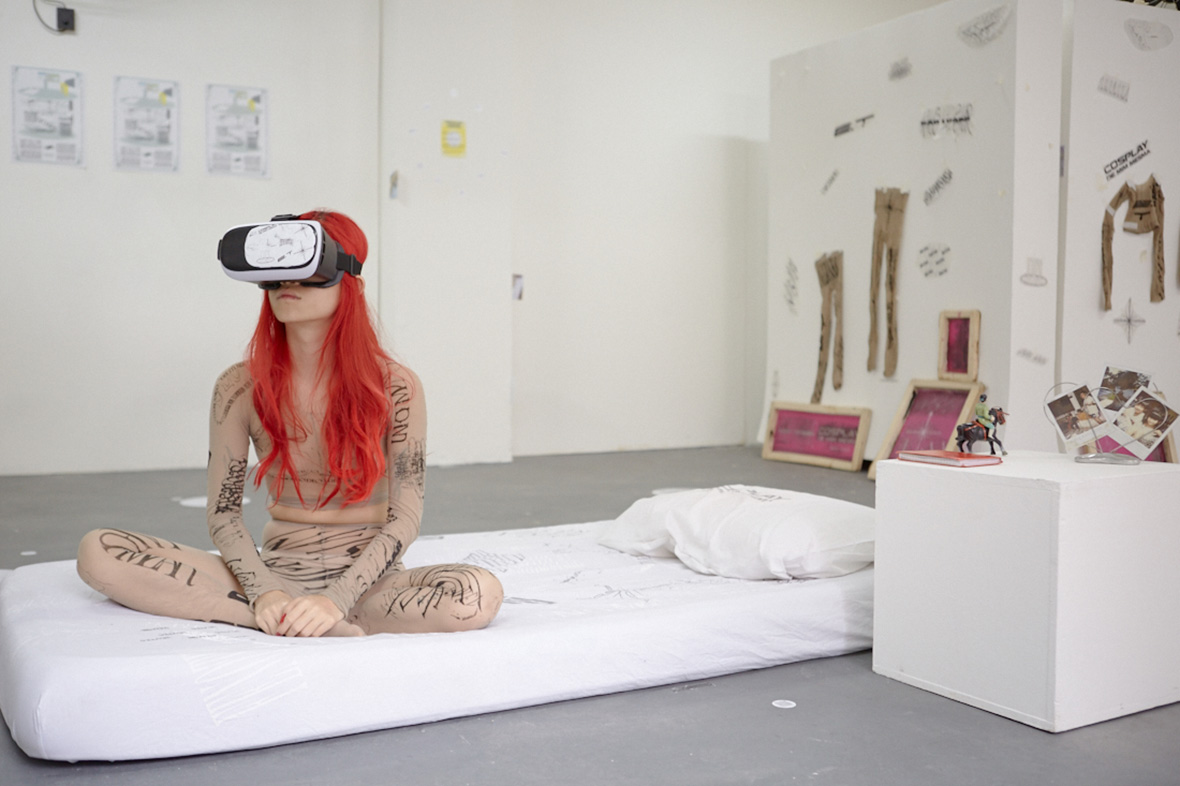
Besides Brazil, Asian immigrants have also landed in countries like Mexico, Cuba, Venezuela, and Peru, to name a few. There, too, their stories are marked by racism and xenophobia. It’s only by listening to their voices and the voices of their descendants that we can have a fuller understanding of Asian diasporas in the West and of how much their experiences converge, how much they differ, and how they might contribute to rebuilding the narrative.
除巴西外,在墨西哥、古巴、委内瑞拉和秘鲁等国家也有许多亚洲移民,他们的故事也同样掺杂着种族歧视、仇外心理的心酸。只有倾听他们及他们后代的声音,我们才能更全面地了解西方国家中亚裔侨民的境遇,了解他们之间经历的共性和不同之处,以及他们如何以全新的姿态在西方人面前重“树”自我。
Like our stories? Follow us on Facebook and Instagram.
Instagram:
@andreterayama
@weendycao
@singhbean
@rycca.lee
@cyshimi
Contributors: Tomas Pinheiro, Lucas Tinoco
Chinese Translation: Olivia Li
Instagram:
@andreterayama
@weendycao
@singhbean
@rycca.lee
@cyshimi
供稿人: Tomas Pinheiro, Lucas Tinoco
英译中: Olivia Li



